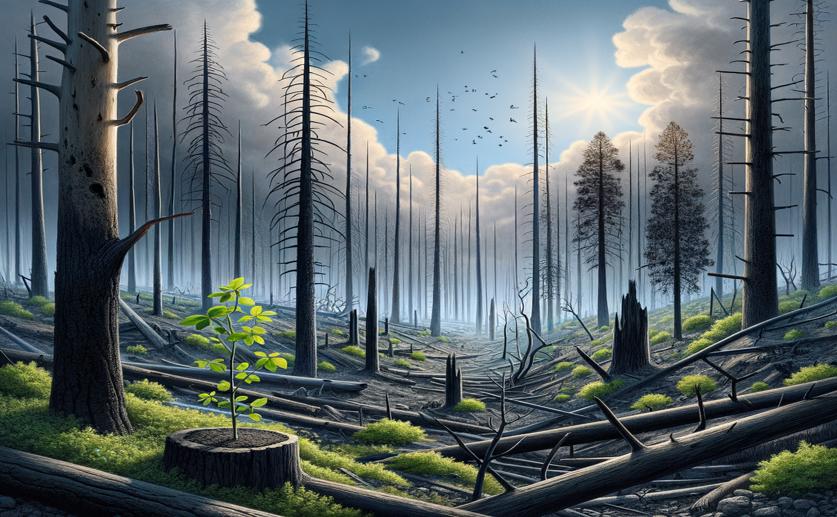
Wildfire Recovery: Climate Matters More Than Terrain or Rain
Greg Howard
26th April, 2024

Image Source: Natural Science News, 2024
Key Findings
- In the southwestern US, post-fire vegetation recovery is influenced more by climate than erosion
- Year-of-fire precipitation affects greenness for up to 5 years, but growing season climate has a stronger impact
- Despite erosion concerns, regional scale recovery shows resilience to post-fire erosion over five years
EnvironmentEcologyPlant Science
References
Main Study
1) Climate limits vegetation green-up more than slope, soil erodibility, and immediate precipitation following high-severity wildfire
Published 25th April, 2024
https://doi.org/10.1186/s42408-024-00264-0
Related Studies
2) Fire in the Earth system.
3) Ten years of vegetation assembly after a North American mega fire.
4) Wildfires and climate change push low-elevation forests across a critical climate threshold for tree regeneration.
5) Interactive effects of historical logging and fire exclusion on ponderosa pine forest structure in the northern Rockies.
Journal: Ecological applications : a publication of the Ecological Society of America, Issue: Vol 20, Issue 7, Oct 2010



 24th January, 2024 | Phil Stevens
24th January, 2024 | Phil Stevens